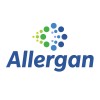
AGN-229666 Ophthalmic Solution in Japanese Patients With Allergic Conjunctivitis
ConjunctivitisAllergicThis study will evaluate the safety and efficacy of AGN-229666 for the prevention of allergen-mediated conjunctivitis.

Efficacy Study to Evaluate the Effectiveness of 3 Concentrations of SAR 1118 in Allergic Conjunctivitis...
Allergic ConjunctivitisThe purpose of this study is to determine whether SAR 1118 at three different concentrations, compared to placebo, is effective in the prevention of the signs and symptoms of allergic conjunctivitis

The Effects of Ectoin® Allergy Nasal Spray and Ectoin® Allergy Eye Drops Compared to Placebo
Allergic RhinitisAllergic ConjunctivitisThe primary objective of this study is to assess the relative efficacy of Ectoin® Allergy Eye Drops and Ectoine® Allergy Nasal Spray compared to placebo, by evaluating Total Nasal Symptom Score (TNSS) and Total Ocular Symptom Score (TOSS). The secondary objectives are : To evaluate the relative efficacy of Ectoin® Allergy Eye Drops and Ectoin® Allergy Nasal Spray compared to placebo by evaluating Total Non Nasal Symptom Score (TNNSS), congestion symptom scores, red eye symptom scores, watery eye symptom scores, itchy eye symptom scores, and by evaluating the mean cross-sectional area (MCA) using acoustic rhinometry (AcR). To assess the change from baseline (post-EEC from pre-EEC) in inflammatory parameters of nasal secretions, comparing Ectoin® Allergy Eye Drops and Ectoin® Allergy Nasal Spray to placebo at each post-treatment visit.

Loteprednol Ophthalmic Base Compared to Loteprednol Ophthalmic Suspension vs Placebo in an Allergen...
Allergic ConjunctivitisThe purpose of this study is to evaluate the efficacy of loteprednol etabonate ophthalmic base, compared to loteprednol etabonate ophthalmic suspension, and vehicle in the prevention of the signs and symptoms of allergic conjunctivitis in a modified Conjunctival Allergen Challenge model and in an environmental model during pollen season. Comparisons will be made following 2 weeks of dosing.

A Single-Center, Randomized, Double-Masked, Placebo and Active Controlled, Dose-Ranging Evaluation...
Allergic ConjunctivitisThe purpose of this study is to evaluate the safety, efficacy, and dose response of brimonidine tartrate ophthalmic solution as compared to placebo in the prevention of allergen-induced conjunctival redness using a conjunctival allergen challenge (CAC) model. It is hypothesized that low-dose brimonidine tartrate ophthalmic solution will be more effective than vehicle in the prevention of conjunctival redness induced by conjunctival allergen challenge when instilled prior to the allergen challenge.

Glycyphagus Domesticus Allergen Extract. Determination of the in Vivo Biological Activity in Histamine...
RhinitisAllergic3 moreThe main purpose of the trial is to prove the therapeutic value of the product and enable an effective and safe dosage schedule to be recommended

Mast-Cell Stabilizing Effects of Olopatadine
Allergic ConjunctivitisTo assess the effects of olopatadine of the release of mast cell histamine

Clinical Efficacy of PRO-118 Compared With Olopatadine Hydrochloride Ophthalmic Solution in Allergic...
Allergic ConjunctivitisThe purpose of this study is to evaluate the clinical efficacy of the ophthalmic solution PRO-118 compared with olopatadine hydrochloride ophthalmic solution in allergic conjunctivitis.

Mapracorat Ophthalmic Formulation in Subjects With Allergic Conjunctivitis
ConjunctivitisAllergicThe objective of this study is to evaluate the dose response, and efficacy of Mapracorat ophthalmic formulation compared to its vehicle for the prevention of symptoms and signs associated with allergic conjunctivitis using a conjunctival allergen challenge (CAC) model.

Study Evaluating the Safety of KetoNaph Ophthalmic Solution in Healthy Volunteers
Allergic ConjunctivitisThis study is being conducted to evaluate the safety of KetoNaph ophthalmic solution in healthy adult subjects and in pediatric subjects with a history or family history of ocular allergy.
